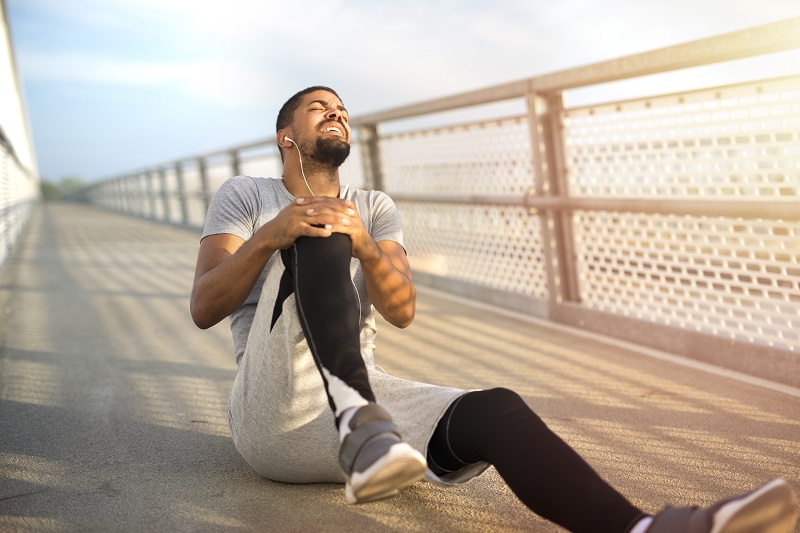
Grade I
If your muscle strain falls under grade I, you can rest assured that there is no major damage caused. In grade I, some of the muscle fibers get torn or stretched. However, this does not mean the experience isn’t painful. You can expect to feel pain, discomfort, and tenderness in your strained muscle.
Grade II
Grade II suggests a moderate strain. In this case, you will have a larger number of injured muscle fibers. Severe muscle pain and extreme tenderness are common during grade II muscle injury. You may also notice a bruise, loss of strength, and mild swelling.
Grade III
In grade III, the muscle is torn all the way through, oftentimes resulting in a “pop” sensation as the strained muscle is ripped into two separate pieces or pulls away from its tendon. Of course, grade III strains are more serious than the last two grades and often result in complete loss of muscle function. Some of the symptoms of grade III muscle injury are discoloration, tenderness, swelling, and considerable pain. You may also notice an obvious gap or dent under the skin where the muscle has been ripped. In grade III strain, it is always recommended to visit a physician for immediate muscle injury treatment in NJ.
Muscle injury treatment
If your muscle strain falls under Grade I or II, your doctor will recommend following the RICE rule.
- Resting the strained muscle
- Ice the injured muscle to minimize swelling
- Compress the injured area with an elastic bandage
- Elevate the area where there is a strained muscle
In a Grade II or III strain, you may be referred to an orthopedic specialist, who may immobilize the injured area in a cast for a few weeks until it is repaired completely.
When to visit an injury treatment clinic?
Visit an injury treatment clinic in NJ if
- You hear a “pop” sensation in your muscle at the time of injury
- You are experiencing severe pain, discoloration, and swelling
- You cannot move your injured area
- Your symptoms do not improve within 48 hours
- You are treated for a mild strain but your symptoms do not improve
- You can find it extremely difficult to perform your daily activities

